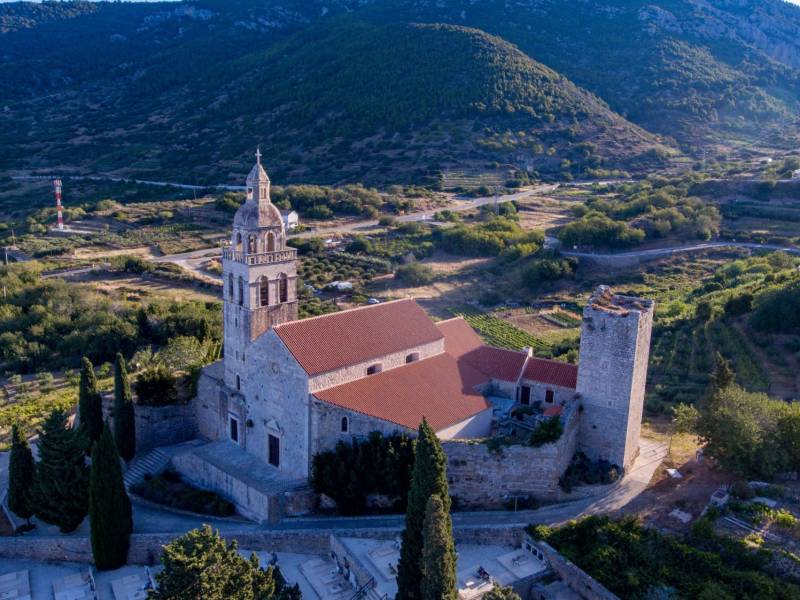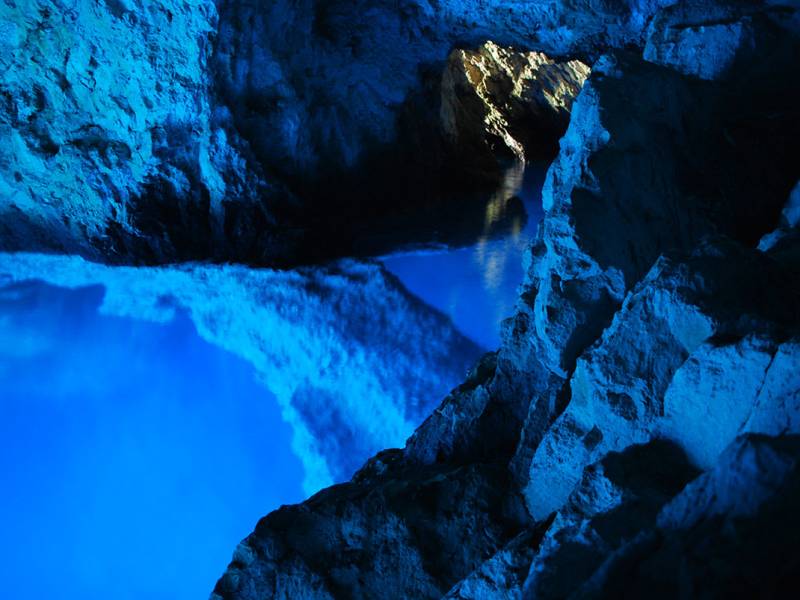Church of St. Nicholas (Muster)
The monastery and church of St. Nicholas, known in Komiža as Muster, were first mentioned in the mid-13th century as a branch of the monastery on Biševo. Tradition has it that the Benedictines left Biševo due to pirate attacks and built a fortified monastery on a hill above Komiža. At the end of the century, the monastery became independent and had its own abbot. In addition to agriculture, the monks were also involved in trade and owned a ship named St. Nicholas.
Muster was a Benedictine monastery until the 15th century, and after their departure the church was expanded over the centuries and became the parish and cemetery church of Komiža. The oldest part of the present-day five-nave church is a Romanesque building from the 13th century, today's northern nave with a semicircular sanctuary. There used to be a cloister and residential buildings next to it. Two towers have been preserved from the fortress: the southern one from the 13th century, one of the oldest in Dalmatia, and a smaller tower on which a bell tower was built in the 18th century.
In the 15th and 16th centuries, the church was additionally fortified due to Turkish threats. During the attack of 1571, the monastery was destroyed, and new fortifications were carried out in 1645 by building a bastion on the northern side. At the end of the 18th century, bronze cannons were placed on its peaks.
The interior of the church is marked by wooden and marble altars. The large wooden altar is considered one of the best examples of local woodcarving. The Bethlehem altar from 1692 is among the oldest preserved depictions of the nativity scene in Croatia. The church also houses numerous tombstones with inscriptions and coats of arms from the 14th to the 18th centuries, and the choir has an organ from 1895.
Muster is also known for two rituals: the celebration of St. Nicholas and the Quarantors. On the feast of St. Nicholas, the patron saint of sailors, an old wooden ship is burned in front of the church. The ashes are used to bless new ships, symbolizing Komižan's connection with the sea.
Kvarantore is a ceremony of adoration of the Blessed Sacrament that lasts forty hours. It begins on Palm Sunday and ends on Tuesday evening, a week before Easter. In Komiža, this custom is observed in its original form, without major changes since the 18th century. The altars are decorated with red cloth, flowers, candlesticks and statues, and more than 120 candles are burned during the ceremony.
The muster has thus been a place of defense, a parish church and a center of religious customs throughout the centuries. Its history and present-day rituals testify to the enduring connection of Komižan with faith and the sea.
Audio guides available in:Italiano, Hrvatski, English (British)






